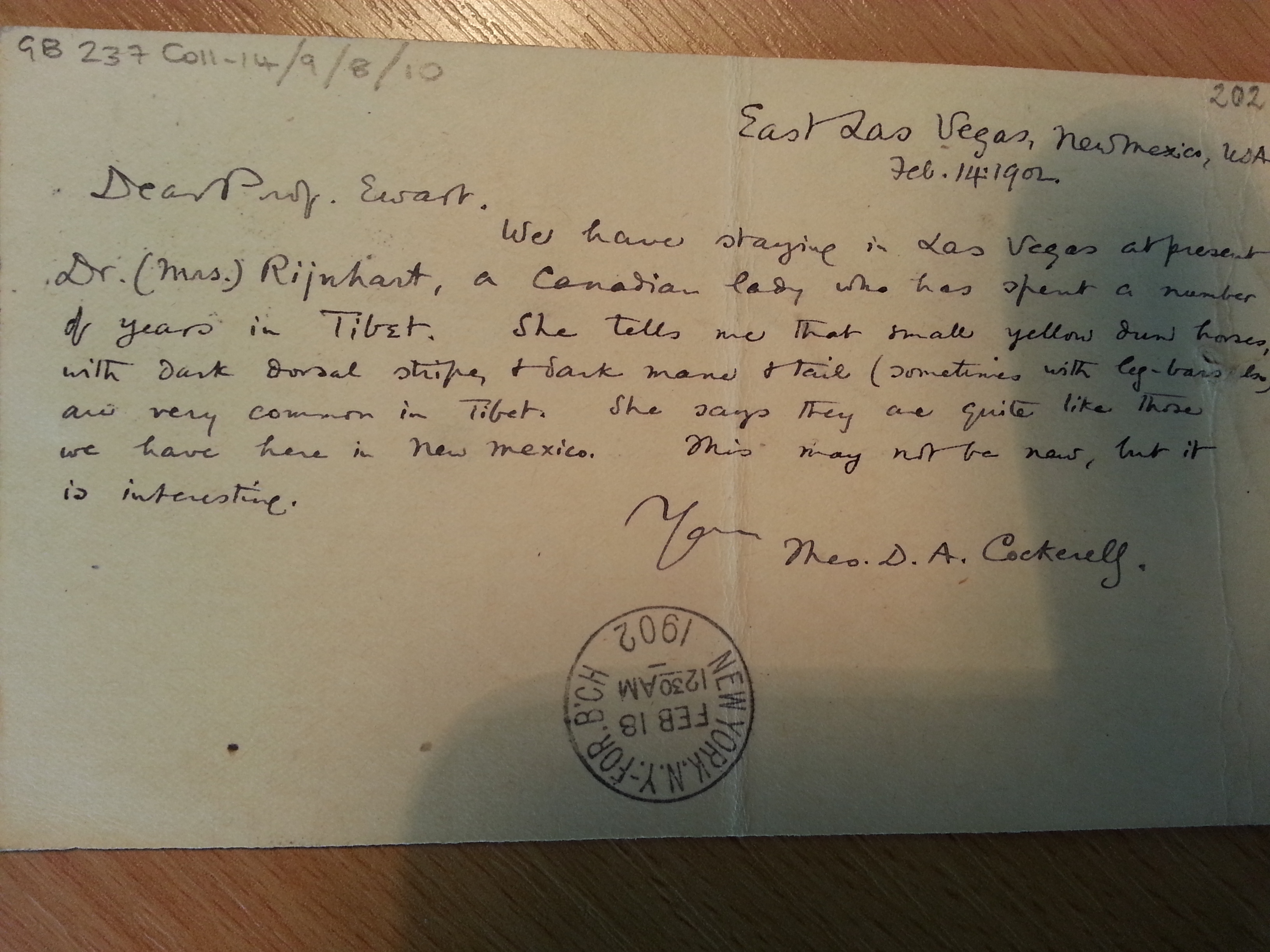Cataloguing the correspondence of zoologist/animal breeder James Cossar Ewart (1851-1933), I have been intrigued by the various ‘life stories’ which emerge from the letters. Periodically I will be including some highlights in a series of posts entitled ‘letters in the limelight’ .
 This week’s ‘Letters in the Limelight’ focuses on a postcard dated 14 February 1902 which was sent to Ewart from the American naturalist Theodore Dru Alison Cockerell (1866-1948). Cockerell is worthy of a blog post in himself, but here we will focus on the name of a woman who Cockerell mentions quite casually: Susanna Carson Rijnhart. Cockerell writes:
This week’s ‘Letters in the Limelight’ focuses on a postcard dated 14 February 1902 which was sent to Ewart from the American naturalist Theodore Dru Alison Cockerell (1866-1948). Cockerell is worthy of a blog post in himself, but here we will focus on the name of a woman who Cockerell mentions quite casually: Susanna Carson Rijnhart. Cockerell writes:
We have been staying in Las Vegas at present [with] Dr (Mrs) Rijnhart, a Canadian lady who has spent a number of years in Tibet. She tells me that male yellow dun horses, with dark dorsal stripe and dark mane and tail…are very common in Tibet. She says they are quite like those we have here in New Mexico. This may not be new, but it is interesting.
Ewart’s abiding research interest at this time was studying those breeds of horses which bear the marks of being of more ancient stock than the popular Arabian horse, which emerged at a later date. Dr Rijnhart was obviously able to provide some information on possible examples of this ‘ancient breed’ from her experiences in Tibet, but there is no indication here of exactly how harrowing that experience was…
Born in Ontario in 1868, Rijnhart graduated as a medical doctor from Toronto at the age of 20 and practised for 6 years. But it was her meeting and marriage to the controversial Petrus Rijnhart, a Dutch-born missionary, that really sent her life on its turbulent course. Before they had been married more than a few months, the couple set out to work as independent missionaries in Tibet. Life was hard, particularly considering the Muslim revolt which broke out in 1896 in Kumbum, where the couple worked. They tended to the wounded and sick and opened a medical dispensary nearby, but their ultimate aim was to reach Lhasa, the Tibetan capital unvisited by Westerners since 1846 and which lay 800 miles away across a series of mountain ranges. In May 1898, Susanna and Petrus left for Lhasa on horseback with their baby Charles and three local hired men, but things swiftly went wrong for them. After two months, two of their hired men deserted, their pack animals were stolen and the baby Charles died suddenly. Determined, the couple pressed on, but it wasn’t long before their caravan was attacked by bandits, leaving them helpless and completely alone. Petrus left Susanna behind to seek help and was never seen or heard of again. A revolver and a little money was all Susanna had left. Still she pressed on across the mountains, bribing a series of local guides, until she reached Kangding (then the most remote outpost of Chinese missionaries) in rags and with frost-bitten feet. There she made her way to the China Inland Mission, where she met James Moyes, who would become her second husband. In 1900 Susanna returned to Canada with failing health and wrote a book about her experiences With the Tibetans in Tent and Temple (Edinburgh, 1901). She bore a son to James in January 1908 but died a month later.
From small names on postcards do big stories come…
